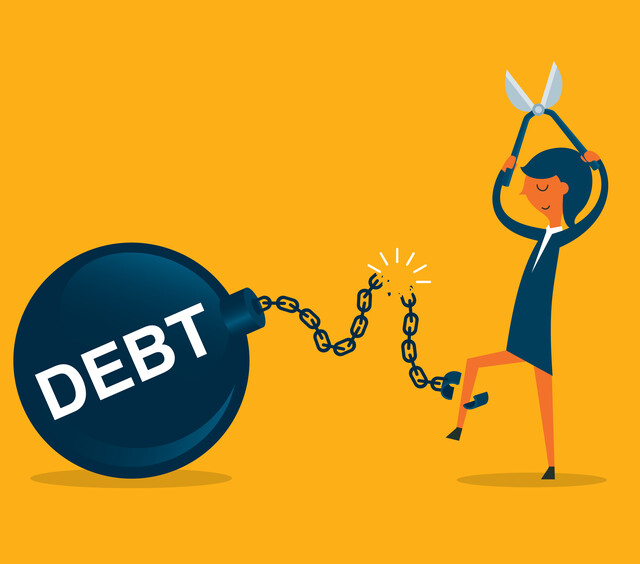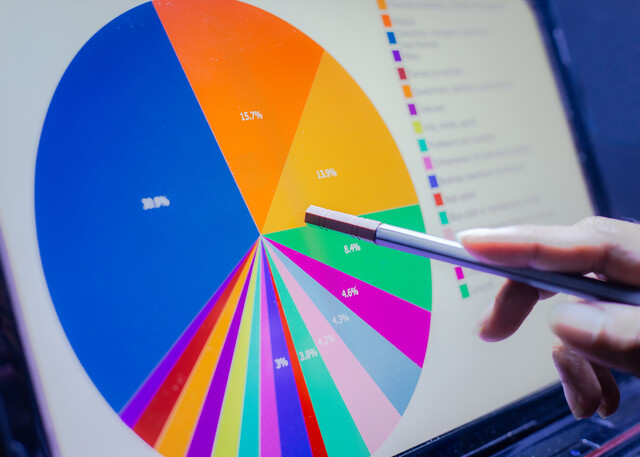| Elements of a Futures Contract |
-
Futures contract � standardized, always exchange-traded
-
Forward contract � customizable, not typically exchange-traded
In order to facilitate a smooth trading process, futures contracts are standardized � including the product, size (quantity of underlying asset covered), delivery date, the quality (called the grade) and delivery location. When commodity producers and dealers purchase contracts, they do it to hedge against (protect their interest from) undesirable price movements; however, these participants make up a very small portion of the marketplace in the 21st century. They may hold the contract while it expires, at which time the participants must fulfill their obligations by transferring the commodity at the settlement price. A settlement price is the last price at which a trade was made for a period; for instance, each trading day has a settlement price at the close of trading. The contract's delivery date is the final settlement price.
The contract is considered a derivative instrument. The value is derived from the value of another asset; for example, the price for a March Dow Jones Industrial Average (DJIA) contract is based upon the index level on the third Friday of March. The price of a derivative contract usually follows the measurement of the underlying asset � if corn prices go up, the futures price increases.
Contracts are listed on an exchange by their symbol. Exchanges have some listings with delivery dates in every month, while others expire only during certain months. Forward contracts are not listed with most exchanges but are instead traded over-the-counter (OTC), which means they're traded between brokers through a dealer network. OTC contracts are usually too small in value to meet most exchanges' requirements.
Every exchange has contract specifications which details the following information:
1. Commodity Name (Underlying Asset)
2. Commodity Symbol
3. Quantity/Contract Size
4. Grade, if any
5. Trading Hours
6. Delivery Months
7. Quoted Value Denomination (e.g. $/lb or interest rate basis points)
8. Point Value
9. Minimum Price Change (Tick)
10. Price Movement Limits per Day, if any
| Contract Size |
| Symbols |
| Contract Pricing |
The value of the contract to be traded is based upon the value of the asset at the delivery date. The price fluctuates based upon the prevailing market attitude about the underlying asset, among other factors. The underlying asset may have a fixed price, whereby the sale price is attached to firm measurement level or quantity, such as 5,000 bushels of corn, or a floating price (i.e. a price based upon an index such as the London Interbank Offered Rate (LIBOR), a rate that banks use to determine interest rates).
Each contract trades based upon a price point per unit. The point value equals a cash equivalent of a one-point increase or decrease in price. Take a Soybean contract (which controls 5,000 bushels) traded on the CBOT, for example: a one cent move in the price per bushel equates to a $50.00 change in the contract's value. The movement in price is measured by a trading increment known as a tick. A tick is the minimum movement a contract price can make upward or downward (also known as the tick size). For many contracts, a tick is a fraction of a one-point move. For example, on the Soybean contract, a tick equals � cent per bushel. The tick value represents the change in the contract's cash value per tick. For the same Soybean contract, a tick would mean a change of $12.50 � which equals the point value multiplied by the tick value ($50.00 x 1/4).
There are two pricing factors that affect the value of the contract throughout its "life": the spot price, which is the price for the underlying asset if sold immediately, and the forward or future's price, which is the anticipated price at delivery. These prices often remain parallel throughout trading and tend to converge as the delivery month draws near. The forward price is typically higher than the spot price. That's because there are additional influencers on the future price. The most common one is the cost to hold the asset (carrying cost). In financial futures, the price may also be influenced by a dividend, which is a nominal payout from a component of an underlying index or financial instrument. For example, the anticipated dividends paid by companies that comprise the S&P 500 can inflate the S&P futures contract. The formula that is traditionally used to calculate the forward price is
Spot Price (S) + Carrying Cost (CC) � Dividend (D) = Forward Price
|
Since the mid-1980s, the variety of underlying assets that futures contracts cover has increased from several agricultural commodities to include financial instruments, index values, energy commodities, energy efficiency credits and more. There are hundreds of contract variations traded on exchanges throughout the world. The contract types are divided into two categories: physical delivery, which may require the delivery of the actual product (e.g. soybeans, coffee); and cash settlement, which requires only a financial obligation based upon the difference between the spot (immediate) value and the futures value on the contract. Some deliverable commodities, like crude oil, may be traded on a cash settlement basis; however, most financial futures cannot be satisfied by physical delivery. |
Price x Size = Value
| Agriculture |
| The Trading Account |
There are two ways that a brokerage house (the intermediary that executes your trades) allows you to trade. One way is through a cash account that requires you to pay the full amount of the trade value within two days of execution. The second way is through a margin account, wherein the brokerage house extends credit to you. Brokerage houses offer different accounts with various levels of service to their clients:
-
Full service � A broker works closely with a client to develop a trading strategy. The broker also provides on-going advice, places orders on the client's behalf and monitors the markets for the client. There are two types of full-service accounts:
o Discretionary accounts provide the broker the authority to manage the account
without specific authorization from the cliento Non-discretionary accounts require authorization prior to making trading
decisions
-
Broker Assisted � The client manages the account but has access to a broker when needed.
-
Managed � A Commodity Trading Advisor has complete authority over trading decisions (similar to a mutual fund). The client is only responsible for meeting margin calls and other deposits.
-
Self-directed � The client manages account and is responsible for research, order placement and other functions.
| Analysis |
Technical Analysis
Today, a trader has many options for conducting research. There are organizations that collect and provide information on commodities and futures contracts; exchanges and large brokerage houses will provide reports on trading activity and fundamental research. Government reports from agencies including the US Department of Agriculture, the US Department of Energy or the US Treasury Department provide crucial information that affects trading. Tools that store and manipulate data for analysis exist both online and as software packages. Sources such as the Commodity Research Bureau (CRB), a long-standing research and analysis firm, supply publications, databases and analysis tools.
The purpose for conducting analysis is to spot trends in trading activity or in the underlying factors affecting the commodity you're interested in. One key factor to consider is supply and demand. Trends in production, consumption and economic activity among other influencers place pressure on prices. The supply-demand formulas look like this:
Supply > Demand = Lower prices
Demand > Supply = Higher prices
| Orders |
Either the order is immediately executed or marked to execute at a specified price once the underlying contract reaches that price. If an order is made at-market, the exchange will match the order as quickly as possible at the best available current price. Pricing is based on the current volume of available contracts being offered at the most recently traded price. For example, you may place a bid order stating "buy two October Corn at market"; the system will make a trade at the next available offer order of the same quantity on the same contract.
An order can also be placed for execution at a specific price or at the closest available price once a price level has been reached. A stop order takes place at a certain price or better. It becomes executed (known as being filled) only when the market price moves to a specified price. For example, you expect June Gold futures prices to fall below the current $937 level soon, so you make the order "sell four June COMEX Gold contracts at $935". This means that, once the contract has hit the $935 point, the order will be executed as quickly as possible. Like the at-the-market order, a stop order is not guaranteed to be filled at exactly the specified price. A limit order requires a trade to take place only at a specific price. For instance, an order to "buy 10 May Coffee contracts at $120" will become in force (executable) if the market reaches that point and may only be executed at that price. Traders can also place orders to be executed at a particular time � typically at the beginning and end of a trading session. Buy (or sell)-on-open orders are to be carried out at the start of the day and buy (or sell)-on-close are executed at the end.
Because some orders take time to become in force, there are standard directives that are given when placing an order that indicate how long the trading desk has to execute the trade. The most common include:
-
Fill-or-kill � Trade must be made immediately and filled in its entirety or cancelled (used for at-market price orders)
-
Good-until-cancelled � Remains an open order until directed by the account holder to cancel
-
Good-until-date/time � Remains open until a specified date or time
-
Good-until-close � Remains open unless the market meets the specified price by the end of the trading session
In order to exit a position, called closing the interest, you must place an offsetting order which, when executed, cancels you out of the original position. For example, if you're long on December Wheat you must execute an offer order to sell the same contract in order to exit your position. Trading stops at the delivery date, so if a trader is in a long position he will either a) have cash deducted from his account to cover the difference between the value agreed upon in the contract and the present value of the asset or b) take delivery of the physical asset, such as 5,000 bushels of corn.






























